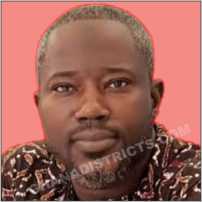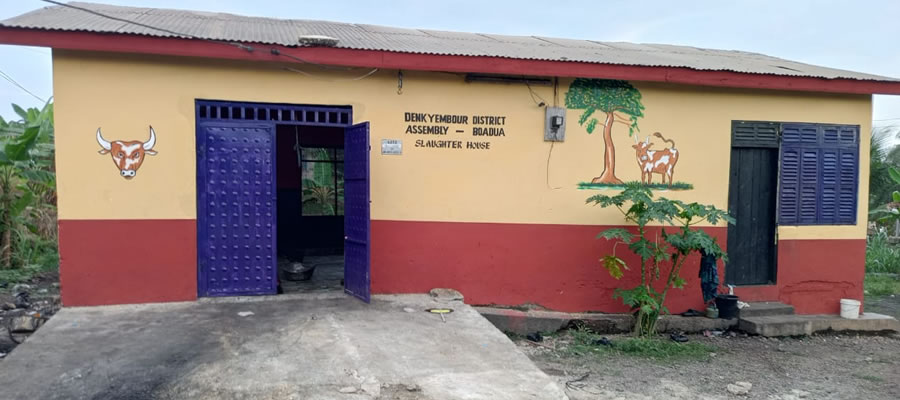

Social Characteristics
Introduction
The status of households in any community gives an understanding of the general characteristics of that community. The total size of the population and its characteristics are largely a reflection of what happens at the household level. Demographic, social and economic factors have significant influence on the size, structure and composition of households in the District. This chapter examines the household’s size, composition, headship, marital status, nationality and religion in the District. Again, the chapter presents information on literacy and education of the population.
Household Size, Composition and Headship
The headship, composition and size of households distinguish one household from the other. Demographic factors like age, household composition, employment status and others are all significant in assessing the welfare of the members of the household. The total household population in the District is 77,713. The average household size in the District is 3.9 compared to the regional average of 4.2.
Household composition
About a quarter (26.1%) of all household members are household heads with male who are heads constituting 35.8 percent and 16.8 percent in the case of females. The relatively high proportion of male headed households is largely due to the patriarchal nature of the Ghanaian society. Majority of household members are children forming a little over a fourth (44.3%) of total household membership. Spouses form 11.6 percent of the household population while grandchildren constitute about 8.4 percent of the household population of the district.
Structure and sex of household population
On the structure of Households in the District, the nuclear family (Head Spouse(s) children) makes up 36.1 percent of the total household population in the District, with 37.5 percent being male heads and 34.7 percent being female heads. Single parent nuclear households make up 13.6 percent. The proportion of households headed by females for Single parent nuclear is 15.2 percent and that of the males is 11.9 percent. Most of the single parent extended households are headed by females and this accounts for (15.7%) while the males constitute (10.8%). A little over 17.3 percent of households in the District are extended family (Head, spouse(s), children, Head's relatives.
Marital Status
Generally, marriage in Ghana is recognized as a union between a man and a woman with the knowledge of both families. In Ghana, the purpose of marriage is to provide companionship for the couple, the means to offer support for each other, and a legitimate avenue for sexual satisfaction and reproduction. Marriage includes formal unions that are legal, traditional or religiously sanctioned, and informal cohabitating unions. The 2010 PHC collected information on the marital status of persons 12 years and above.
The marital status of the people in Denkyembuor District is a total of 53,710 persons 12 years and older, 42.2 percent are married, 39.5 percent have never married while 2.1 percent are separated. Nearly 1 in 10 (7.2%) are in consensual union, 4.5 percent are widowed and the proportion divorced is 4.4 percent.
Marital status and level of education
Levels of education for persons 12 years and older by sex and marital status. Of this population, 15.9 percent has no education, more than half (68.0%) has basic education, 9.6 percent with secondary education 2.5 percent has 28 vocational/technical/commercial education, 3.0 percent having either post middle/secondary/certificate/diploma education, and 0.9 percent have tertiary education.
Between the sexes, the proportions of never married females are higher at all the levels of education compared to males except at the secondary and tertiary level. For those in informal or consensual unions, only 0.1 percent of females have attained tertiary level of education compared to 1.5 percent of males.
Marital status and economic activities
Out of the 53,710 persons, 31,810 representing 59.2 percent are employed, 1,695 (3.2%) are unemployed and 20,205 (37.6%) are economically not active. Of the population12 years and older who are married, the employed form 83.1 percent with 2.4 percent unemployed and 14.5 percent are economically not active. Those in the informal/consensual union have 79.0 percent who are employed with 5.1 percent being 29 unemployed.The never married category has 26.7 percent employed with only 3.7 percent unemployed while 69.6 percent are economically not active.
Among the male population 12 years and older, those employed are 61.8 percent with the unemployed constituting 2.6 percent. Of this male population, those married who are employed forms 87.3 percent and the never married male who are employed constitute 30.7 percent.
Again, of the female population 12 years and older, the married who are employed form 79.3 percent while those unemployed form 3.0 percent with 17.7 percent being economically not active.
Nationality
Ghanaians by birth as expected constitute the largest percentage (95.7%) of the total population of the district. Ghanaians with dual citizenship (2.0%) forms a very small percentage with 0.7 percent are Ghanaians by naturalization and 1.6 percent are non-Ghanaians. Of the non-Ghanaian population, ECOWAS citizens constitute 71.2 percent (891).
Access to Utilities
Main source of lighting of dwelling unit by type of locality
The main source of lighting for urban households is electricity from the main grid and this account for 78.6 percent. More than half of rural households (53.6%) use lighting powered from the main line electricity supply. The use of kerosene lamp (32.0%) and flash light/torch (12.5%) as main sources of lighting is predominant among rural households. The use of other sources of lighting apart from those mentioned earlier is less than one percent for both rural and urban localities in the District.
Main source of cooking fuel, and cooking space used by households
From the 2010 PHC, the main source of fuel for cooking for most households in the district is wood (41.2%), with 63.9 percent of rural households using wood compared to 25.1 percent of urban.
households. The next preferred cooking fuel is charcoal and is used by 38.3 percent (of households with nearly half (48.8%) of urban households using it compared to 23.5 percent of rural households. The use of gas is not highly patronized in the District as only 11.2 percent of households use gas. Comparatively, more of urban households (15.9 %) uses gas as cooking fuel to their rural households where only4.5 Percent use gas.
It is observed that 33.3 percent have separate room for exclusive use of cooking with 11.8 percent using open space in compound and 7.2 percent uses a structure with roof but without walls. About 3 out of 10 households (29.4%) use the verandah as cooking space with 35.3 percent of urban households compared to 21.0 percent of rural households who use the verandah.
Date Created : 11/24/2017 2:35:57 AM













 facebook
facebook
 twitter
twitter
 Youtube
Youtube
 +233 593 831 280
+233 593 831 280 0800 430 430
0800 430 430 GPS: GE-231-4383
GPS: GE-231-4383 info@ghanadistricts.com
info@ghanadistricts.com Box GP1044, Accra, Ghana
Box GP1044, Accra, Ghana